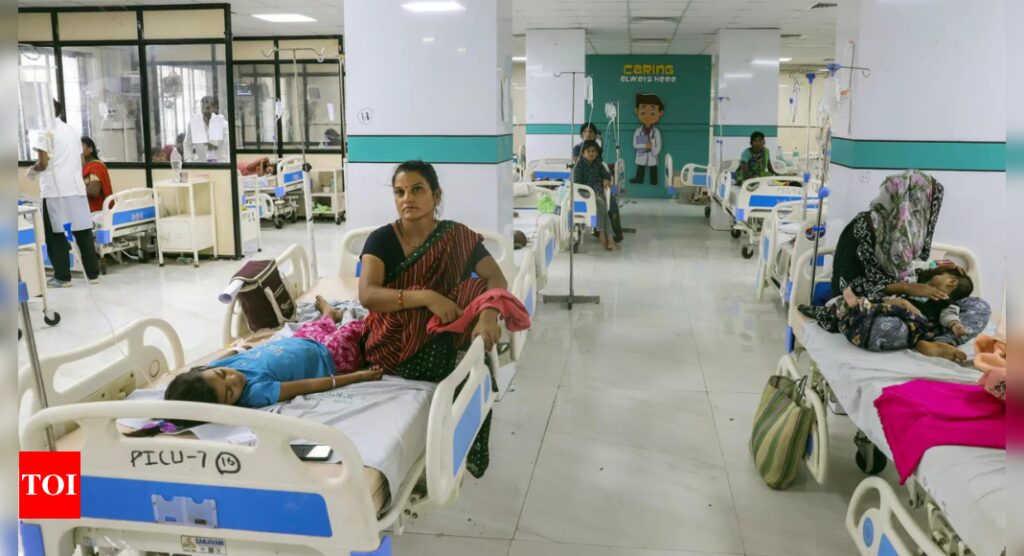[ad_1]
Consider Nanded, where 24 deaths occurred in a 24-hour period in Shankarrao Chavan Hospital. Of them, 12 were newborns between one and three days old. Six of the newborns had respiratory distress. “It needs to be assessed if manual ambu bags (manual resuscitators) were available in the hospital or senior staff trained in using them were around,” said a doctor.
In the Government Medical College on Ghati Road, in Chhatrapati Sambhajinagar, where 18 deaths occurred in a 24-hour period ending Tuesday, two were pre-term babies just a few days old.
Pre-term births big cause
A state health official said, “We have seen an improvement in the last few years. And most of the causes such as congenital abnormality cannot be controlled.” The leading causes of neonatal death are prematurity, low birth weight and respiratory distress.
However, a doctor from a hospital in erstwhile Aurangabad said premature births have increased of late. “The main reason for preterm deliveries is maternal nutrition deficiency, which results from lack of awareness. While macro nutrients are consumed, many pregnant women miss out on micro nutrients such as iron, zinc that are equally important and responsible for a child’s growth in the mother’s womb,” said GMCH’s associate prof and neonatal section in-charge Amol Joshi.
Noted health activist and paediatrician Dr Abhay Bang, who has been working to tackle infant mortality in Gadchiroli, said two factors contribute to majority of the deaths: neonatal sepsis and preterm births. Interestingly, his research in 39 villages of Gadchiroli revealed significant improvement in incidence of neonatal sepsis, dropping from 16% to 2%. However, the rate of preterm births is unchanged.
More hospital births, more NICU stay
Dr Bang has a different take on the entire issue. He said the sudden surge in deaths could be linked to one significant factor – the rise in hospital deliveries, primarily driven by initiatives like the Janani Suraksha Yojana.

Even in the most remote areas, more mothers are opting for institutional deliveries, leading to a higher number of infants needing specialized care in paediatric and neonatal intensive care units (NICUs). And despite substantial increase in hospital deliveries, government has failed to proportionally increase the healthcare workforce and infrastructure. “While the percentage of women delivering in hospitals has surged from 40% to 80%, healthcare facilities have remained largely unchanged. This disparity is a likely factor contributing to the sudden upswing in infant mortality rates,” according to Dr Bang. Furthermore, the majority of government PICUs and NICUs suffer from overcrowding, inadequate staffing, and hygiene deficiencies. Dr Bang emphasizes that neonates, in particular, are highly vulnerable and account for a significant portion of these unfortunate deaths.
Late referrals
Doctors said late referrals are also a reason for higher deaths. “State hospitals are literally the dumping ground where private sector hospitals send a patient who is critical,” said an official from department of medical education that runs medical colleges.
Maharashtra: 24 deaths, including 12 newborns, at Nanded Civil Hospital, opposition demands probe
Milind Mhaiskar, additional chief secretary of the public health department said in most cases, late referrals of critical cases are proving to be a key reason. “As patients reach late, doctors have little time to activate the full scale of lifesaving measures,” he said. Dr Rajendra Saoji, who heads the pediatric surgery department of GMCH Nagpur, said, “Children from the periphery often arrive at these hospitals in a critical condition, many are referred by local private hospitals in a serious state. As government hospitals, we are committed to providing care to all patients and do our utmost to save them. Unfortunately, neonatal care facilities are limited in the region, compounding the challenges we face.”
Health economist Dr Ravi Duggal said the main reason for higher deaths among neonates are inadequate number of NICUs and trained staff. “Health has low priority as it’s not a political issue, resulting in barely 4% of the budget being allocated to it,” he added.
(Inputs from Chaitanya Deshpande, Nagpur)
[ad_2]
Source link










More Stories
We can’t wait to face India in the final: Pat Cummins | Cricket News
Railways plans 3,000 additional trains in next 4-5 years to minimise number of waitlisted tickets | India News
Faridabad: Man dies after ‘falling from hotel room window’ while partying with friends